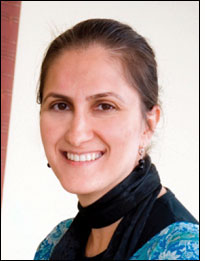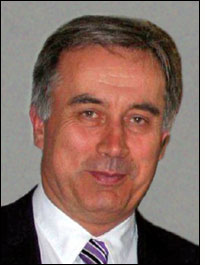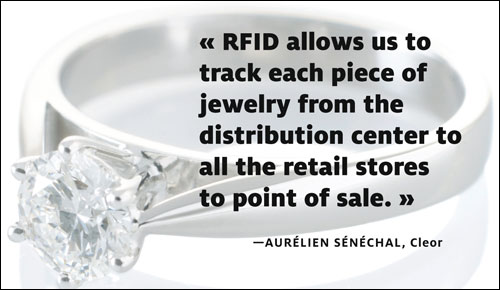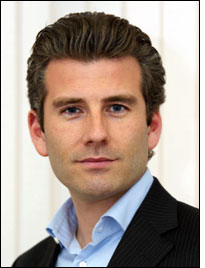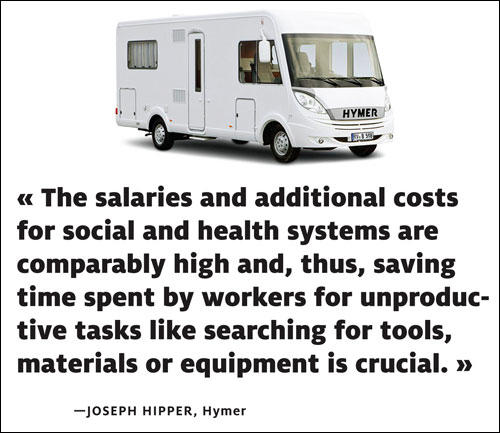Oct 01, 2011Europe is experiencing its greatest financial and social crisis since the end of World War II. The economies of Greece, Ireland, Portugal and several other European Union (EU) member nations teeter on the brink, while governments in France, Germany and other financially healthier countries pull their belts ever tighter by raising taxes and trimming services.
Against this dreary backdrop, decision-makers at midsize European businesses ponder their radio frequency identification options. They understand that RFID has the proven ability to slash costs and boost revenue by streamlining operations across the supply chain and beyond. Yet sluggish markets, shrinking budgets, soaring taxes and fear of additional social and financial upheaval make planning far more difficult and riskier than in years past.
Compared with their mega-enterprise counterparts, business leaders at midsize companies have precious little maneuvering room. Smaller operating budgets make it harder to fund new projects, and tighter lending requirements make it difficult for many businesses—even financially sound ones—to borrow money, despite record-low interest rates. As if these troubles weren't enough, RFID decision-makers must also face the fact that government support is rapidly evaporating. The days when the European Commission (EC) and various national and local government organizations would lavish money on just about any RFID project that showed even a scintilla of commercial or social promise are over. Today, with fewer research grants available, new RFID projects must show significant potential for long-term success from the very beginning. Even then, funding—public or private—can be hard to find.
Considering all these challenges, you might think RFID's future in Europe is about as bleak as a finance minister's budget forecast. But that's not true. It's a sign of RFID's growing maturity and commercial value that new deployments continue arriving at a steady pace, with nimble midsize European businesses pioneering RFID innovations their larger counterparts are either too timid or too bureaucratic to create.
RFID Journal recently asked leaders of midrange European companies in five key fields—food production, logistics, retail, manufacturing and apparel—to reflect on their current relationships with the technology and the lessons they've learned, as well as to predict where things are headed. Their answers, as you'll see, are informative, illustrative for RFID leaders worldwide and, at times, controversial.
Bahar Ozrun, CEO of Bereket Döner, in Istanbul, Turkey, is a pioneer in several ways: as a business leader in a country where powerful women are still a rarity, a food industry production expert and an RFID innovator.
Bereket Döner, which produces frozen and ready-to-cook gyros, relies on RFID for both order processing and inventory management. The company now tags all its finished products. The items are read and identified with multiple scans throughout the packaging and pallet assembly processes. Inventory-management software, integrated with the firm's product database, feeds critical processing and inventory data into the company's enterprise resource planning system. "What's most exciting about our RFID system is that it's the first use of the technology in a moist and frozen environment with 100 percent accuracy," Ozrun says.
Bereket Döner began investigating RFID a couple of years ago, creating a team tasked with finding a way to use the technology to expedite order processing and assembly. "We started reaching out to a number of RFID vendors in early 2010 to explore if they could assist us with our operational challenges," Ozrun says. But the team quickly learned that conventional RFID solutions weren't suitable for use within the company's production environment. "The handicap was that RFID had never been applied directly on frozen raw meat in wet environments or subzero conditions," Ozrun says. "As a major manufacturer of gyro packages, this was a major barrier for us." The team eventually connected with RFID Enabled Solutions (RES), a Dublin, Ohio-based company willing to take on the challenging project.
RES' pioneering system works by using a combination of RFID and bar code technologies. Tags are placed onto the raw meat before it's wrapped and frozen. The meat is next sent to a commissioning station, where it's weighed and packaged. Each tag is then read and linked to a bar code before the package is sent into a storage freezer. Both the RFID tag and bar code contain the product's stock-keeping unit, production date and weight data. Later, at the order-processing stage, an employee assembles a purchase-order pallet, which is wheeled into a scanning tunnel, where its contents and weight are verified against the purchase order.
Like many of her counterparts, Ozrun believes Europe leads the world in RFID adoption and innovation. "We feel that the investment in the technology in Europe is more accepted because of the competitive demands apparent in the EU, coupled with the need to reduce costs and improve efficiencies," she says. "The technology has been heavily marketed, bringing practical solutions in a cost-effective way."
Since Turkey isn't an EU member, Bereket Döner wasn't able to take advantage of EC research support, instead learning lessons from fellow RFID adopters. "We did not look to the EC for guidance with this project; we were more focused on our business challenges," Ozrun says. "We looked to the local business community involved with RFID to assist us with our challenges."
Even as Bereket Döner moves to extend its RFID deployment into new areas, Ozrun feels the company has yet to unlock RFID's full potential. She's looking forward to working with partners on future RFID initiatives, "extending the technology to the supply chain side of business and improving overall quality assurance," she says.
For Franco Cappelletti, CEO of Logistics and Traffic Centre (L&TC), in Perugia, Italy, RFID is an essential tool for managing complex logistics operations. L&TC is a third-party logistics provider that serves the clothing, footwear and accessories industries. "With three branches strategically located in Italy, we move approximately 12 million units annually, working with more than 20 clients who are leaders in various fashion markets,"
Cappelletti says. "Our [RFID] project originated based on our company's need to improve our logistics services in terms of performance, security, control and economic savings."
L&TC started planning its initial RFID deployment in 2008 and began evaluating specific vendors and technologies the following year. In late 2009, a system, based on readers from Seattle-based Impinj and tags from UPM RFID of Pirkkala, Finland, was installed in the company's Prato branch warehouse, near Florence. "A portal was positioned in our receiving area to enable us to check and verify incoming goods," Cappelletti says. "A tunnel was also placed in our packing/departure area to control our packed orders and to associate the EPC with the client order to enable us to track the order."
The system began delivering benefits almost immediately, which inspired L&TC to plan similar systems for its other two warehouses, Cappelletti says. Further expansion is also on the drawing board. "The second and third phases will be to implement RFID use in our put-away processing and our picking processes," he says. "We will continue to evaluate additional possibilities as we gain more experience and as the number of clients using RFID for the fashion industry grows."
Despite a steady flow of dire headlines, Cappelletti feels economic factors aren't likely to hamper L&TC's ability to expand its RFID operations. "In Italy, the economic situation is better than what the press writes—particularly the overseas press," he says. "It's true that we have a high public debt, but we also have a strong economic power, and, in this way, we can still offer the right guarantees."
Stubbornly high tag costs are, however, discouraging many businesses from planning RFID deployments, Cappelletti says. "I think the only reason why Italian companies are hesitant to invest in RFID is because the cost of the tags is still too high," he says. The cost of a tag for fashion logistics services hovers around 8 euro cents, he notes, and given the large numbers of items that must be moved, tagging costs can easily skyrocket. As an example, he says, "0.08 times 1 million pieces equals 80,000 euros of investment."
Cappelletti feels that luxury goods (including fashion apparel) and pharmaceuticals are the two areas with the greatest need for RFID services. "Where there is an expensive product, there is the possibility of investing in a technology that demands a relatively high cost," he says. "RFID tags also become a guarantee of authenticity."
Aurélien Sénéchal, COO of Cleor, a retail jewelry chain headquartered in Évreux, France, is convinced RFID is essential to continued business success at a time when fewer people are purchasing luxury items. "RFID allows us to track each piece of jewelry from the distribution center to all the retail stores to point of sale," he says.
Cleor has more than 50 stores, primarily in Paris and other parts of northern and western France. With a launch rate of approximately 10 new stores per year, it anticipates growing to more than 60 stores by the end of 2011.
In 2009, the company began thinking about using RFID as a way to track inventory, Sénéchal says. Each Cleor store holds, on average, 10,000 items. "We realized our sales staff was spending more time on inventory than on the core business—sales and customer consulting services—so we decided to explore the potential of RFID," he says.
Deployment began in April 2009. The system, using technology from London-based Psion, was installed over eight months, beginning with Cleor's Paris-area distribution center and 10 stores. It was eventually deployed at the other 40 retail locations.
RFID has revolutionized the way in which Cleor stores operate, Sénéchal says. "The solution's greatest value has been in improved accuracy," he notes. "It has reduced errors in shipping and receiving." Previously, an inventory check would take several days. "Today, it only takes a few hours," he says.
Gazing into the future, Sénéchal sees portability as one of RFID's most promising frontiers. "Retailers are moving toward solutions that use handheld readers to collect inventory data instead of fixed readers or portals," he says. Smaller and less power-thirsty portable readers will make it easier for retailers in Europe and elsewhere to integrate RFID services into existing operations and to bring the technology onto the sales floor in a natural and nonintrusive way.
Increasingly compact readers will also be easier to fit into an array of store fixtures, including counters, racks and promotional displays, Sénéchal says. "I believe future stores will be equipped with smart display cabinets, allowing for constant inventory without using man hours," he adds. "It [RFID in general] will also be a powerful tool for merchandising purposes."
Sénéchal notes that Cleor is collaborating on a smart cabinetry project with RFID technology partners Frequentiel and Tageos. A functional prototype is already complete. "This solution should be deployed in our stores starting 2012," Sénéchal says.
The fact that RFID helps manufacturers build products faster, more efficiently and at a lower cost is a point that hasn't been lost on Josef Hipper, CIO of Hymer, a motor-home maker based in Bad Waldsee, Germany, near the Swiss border. Hymer uses RFID to track vehicles through manufacturing and onto storage lots. "This way, we always know where vehicles are in production, how well they proceed, and where they have been placed for delivery or further manufacturing on the big factory campus," he explains.
Hymer initially considered RFID in 2004. "We first talked about passive RFID, but noticed that the read range was too short," Hipper recalls. Other RFID approaches were discussed and rejected for various reasons.
"Finally, we had a breakthrough when we found Ekahau [a provider of real-time location systems (RTLSs), based in Reston, Va.] through our Wi-Fi supplier, Siemens, and we noticed we could leverage standard Wi-Fi technology," he says.
Detailed planning began in January 2007, and the deployment was completed in May. "Ekahau RTLS is based on our existing wireless LAN network and integrates seamlessly," Hipper says. Tagged vehicles report at intervals to an RTLS controller, which calculates their actual positions. The location data is fed into Hymer's management software, which is connected to the RTLS controller through an XML interface.
Hipper observes that selecting standardized technologies was key to the project's success. "There is a definite trend to using standardized technologies on standardized infrastructure, to ensure interoperability and protect the investments by making them future-proof," he says. "I believe this is a worldwide phenomenon."
RFID is essential for European businesses struggling with rising labor costs, Hipper says. "The salaries and additional costs for social and health systems are comparably high and, thus, saving time spent by workers for unproductive tasks like searching for tools, materials or equipment is crucial," he says. "In Europe, especially in Germany, we tend to go for perfection when it comes to process optimization and technology."
EC-generated financial support has helped RFID gain a strong foothold in Europe, and Hipper expects such funding to remain available in the future. "EC support has provided budgets for scientific works and the industrial development of technologies, as well as in... improving efficiencies in many verticals," he says. "I would expect this to continue, since the need for organizational and technological improvements is growing."
At Lemmi Fashion, which specializes in children's apparel, CEO Göetz Pfeifferling is directly responsible for the company's RFID strategy, as well as for RFID technology acquisition and deployment. "This is driven from the top," Pfeifferling says. "I have made most of the decisions."
Lemmi has long viewed itself as a technology innovator. The company, based in Fritzlar, Germany, was an early fashion industry RFID adopter and continues to look for new ways in which to use the technology. "RFID technology is an enabler to further drive processes into perfection," Pfeifferling says.
Looking to create a more efficient supply chain, Lemmi released its first RFID deployment—a high-frequency system—in 2005. The company switched to ultrahigh-frequency technology in 2007. Both benchmarks were achieved while Pfeifferling was the company's CIO.
Today, Pfeifferling remains committed to RFID. Lemmi's RFID investment has advanced to the stage that the company is now using the technology at the item level. "Motivated by discrepancies in stock and deliveries, we were looking for an option to track items," Pfeifferling explains. "All our items are tagged at the source and tracked throughout the supply chain." He notes that the use of bar codes wasn't considered. "It has proven to be too slow within our warehouse operations," he says.
Pfeifferling is pleased by how RFID has streamlined Lemmi's operations, allowing the company to achieve added insight into its operations. "RFID has proven to be a very reliable platform for our warehouse operations and track-and-trace applications," he says. "We've dramatically increased visibility within our supply chain and ensured a higher-quality level of deliveries to customers."
Pfeifferling says he always keeps an eye open for ways in which RFID can be used to further improve efficiency and lower costs. "Currently, we are looking closely at new developments in inlays and we're still interested in taking RFID, with our retail partners, to the point of sale."
Like many European RFID adopters, Lemmi hasn't been reluctant to use government funding support. "We have had a small project with Karstadt to track items to the sales floor of its Düsseldorf store," Pfeifferling says. "This project has been funded by the German government to help SME [small and midsize enterprise] companies evaluate the technology."
Like Hipper, Pfeifferling believes RFID fills a business need created by European social and economic policies, which provide a generous financial safety net that discourages people from accepting low-wage jobs. "Europe has expensive labor due to high social security standards," he observes. "Due to the cost of labor, Europe, and especially Germany, has always turned to processes and automation."
Photos: iStockphoto


